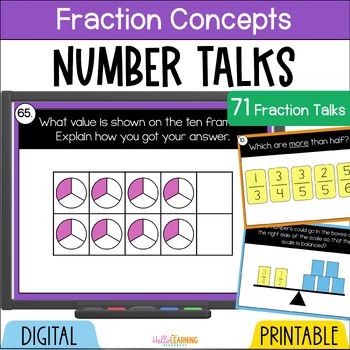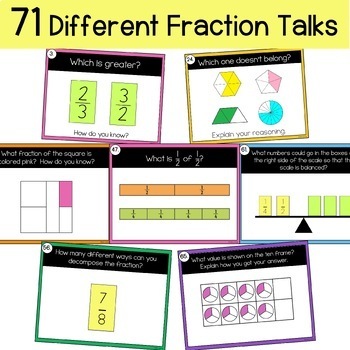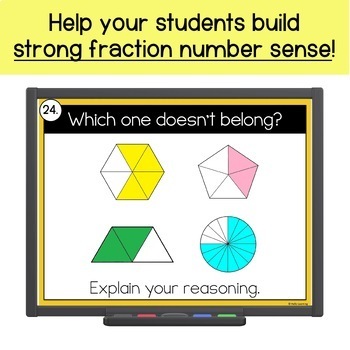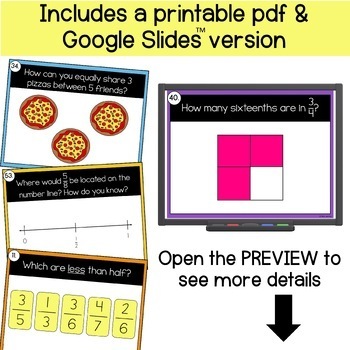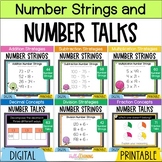Fraction Number Talks - 4th and 5th Grade - Math Talks for Fraction Fluency
- PDF
- Google Apps™

What educators are saying
Also included in
- This number talks and number strings bundle includes over 300 number talks that can be used as a whole class or in small groups. Strengthen number sense and math strategies when you use these math talks as a part of math warm ups or in small group math activities.You will save 20% off the individualPrice $19.97Original Price $26.00Save $6.03
Description
This fraction number talks resource includes 71 number talks on fraction concepts that can be used as a whole class or in small groups. Strengthen your students fraction number sense when you use these math talks as a part of your daily math warm ups.
Click on the PREVIEW button to see the types of fraction number talks included!
⭐ Includes both pdf and digital (Google Slides) versions.
- Link to the Google Slides ™ version can be found in the pdf file.
⭐ What's Included?
- 71 fraction number talks
- answer keys
- pdf printable version
- digital version for Google Slides ™
⭐ Fraction Concepts Included:
- Comparing fractions to 0, 1/2 and 1 whole
- Comparing fractions- which one is greater or less
- Fractions between landmark or benchmark fractions
- Sharing quantities
- Which one doesn't belong?
- Parts of fractions
- Fraction strips and tape diagrams
- What fraction of a square is shaded?
- Fractions on a number line
- Decomposing fractions
- Balancing scales with fractions
- Fractions on ten frames
- Would you rather? fraction of a set
Doing a number talk at the beginning of your math class takes only 5-10 minutes and provides great practice in:
- mental math
- communicating results
- considering and trying other strategies
- building a collection of a variety of strategies
- making decisions to choose the most efficient strategy
- clarifying thinking
- investigating and applying mathematical relationships
- learning from mistakes
- fostering community and the value of the contributions of others
Ways to use these fraction number talks:
- project on a screen for the whole class to view
- print and use in small groups
- whole class math warm ups
- small group math activities
- guided math groups
- math centers
- fraction pre assessment (gather knowledge about your students fraction understanding before starting a fractions unit)
The fraction talks in this resource are perfect for upper elementary students: 3rd, 4th and 5th grade.
This number talk resource gives you a quick and easy way to help your students apply the eight common core state standards for mathematical practice.
***Answer keys are included***
Check out these other number talks resources in my store:
Number Talks - Addition - Upper Elementary
Number Talks - Subtraction - Upper Elementary
Number Talks - Multiplication - Upper Elementary
Number Talks - Division - Upper Elementary
Number Talks Bundle- All 4 Operations - Upper Elementary
Follow me and be notified when new products are added to my store.
New products are always 50% off for the first 24 hours they are posted!
Thanks!
- Dawn
⭐ Did you know that leaving feedback on your TpT purchases earns you credits that will save you money? Go to your ‘My Purchases’ page and leave feedback on the resources you’ve purchased to earn TPT credits toward future purchases!

